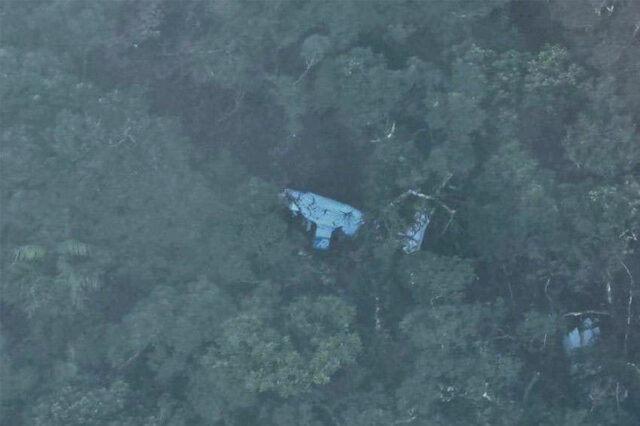Christmas is just around the corner, and people are busy buying gifts for their loved ones and godchildren, among others. Those who missed the 11.11 sales are probably looking forward to the 12.12 promo today, with avid online shoppers ready to press the “checkout” button on their favorite online store.
Since the pandemic, an increasing number of Filipinos have been using the internet for their shopping needs. Unfortunately, some people are also taking advantage of this season to boost their sales or income by resorting to false advertising, especially on social media. Hence, consumers should be vigilant when buying online.
Currently, we do not have a law that directly punishes social media companies for posts that contain false advertising. However, we have laws and issuances such as the Consumer Act of the Philippines and Joint Administrative Order (JAO) No. 22-01 issued by the Department of Trade and Industry and other agencies that could be used to penalize sellers for false advertising and unfair trade practices.
The same is true for tax returns. Filing a false return may also result in the taxpayer’s paying deficiency taxes and penalties, and it may even be grounds for an extension of the prescriptive period if certain conditions are met.
Under the 1997 Tax Code, as amended, the BIR has three years from the filing of the return to issue an assessment against a taxpayer. This prescriptive period aims to protect the interests of taxpayers from unreasonable tax investigations. But there is an exception to this three-year general rule. Section 222(a) of the tax code provides that in the case of a false return or fraudulent return with intent to evade tax or of failure to file a return, the period may be extended to 10 years after the discovery of the falsity, fraud, or omission. Accordingly, the exception to the three-year prescriptive period may apply in three cases, i.e., if the taxpayer: (1) filed a false return; (2) filed a fraudulent return; and (3) failed to file a return.
The question now from some taxpayers is how Section 222(a) should be interpreted in the case of a false return. Would an unintentional or honest mistake in the figures reported in return render it a false return for purposes of applying the 10-year prescriptive period? What are the requisites, if any, in determining whether the same may fall under the exception?
In various cases, the Bureau of Internal Revenue (BIR) applied the 10-year prescriptive period in cases of false return with substantial under-declaration by invoking the old Supreme Court (SC) decision, Aznar vs. Court of Tax Appeals. In that case, a return is considered false if it deviates from the truth, whether such deviation was deliberate or inadvertent. Hence, it was interpreted that an honest mistake in a return may be construed as a false return to warrant the application of the extraordinary period to assess.
On the other hand, various SC cases (one of which is Commissioner of Internal Revenue vs. Philippine Daily Inquirer, Inc., G.R. No. 213943), which ruled that the entry of wrong information due to a mistake, carelessness, or ignorance, without intent to evade taxes, does not constitute a false return. Hence, there should be sufficient evidence to prove the intentional falsity on the part of the taxpayer in order for the 10-year prescriptive period to be applied.
Because of these diverging decisions, some BIR examiners are still invoking the extraordinary prescriptive period even if the misstatement or error is unintentional, especially if the three-year prescriptive period has lapsed. Taxpayers, on the other hand, are hoping for clear guidelines on the proper application of Section 222(a) to ensure that their rights are protected against unreasonable tax audits.
Fortunately, in the recent en banc decision of the SC in the case of McDonald’s Philippines Realty Corp. vs. the CIR (G.R. No. 247737), this issue has finally been settled. The Court ruled that for purposes of invoking the extraordinary period under Section 222(a), the BIR must be able to prove that such misstatement or error is intentional and deliberate.
As clearly explained by the Court, the purpose of the examination of the taxpayer’s books by the tax authorities is to determine the correct amount of taxes. Each audit will necessarily expose varying errors and/or irregularities in how the taxpayer computes its tax liabilities. If the BIR’s position is followed (i.e., unintentional errors will be considered false returns under Section 222(a)), then all such inaccuracies committed by the taxpayer — including mere clerical or typographical errors or arithmetic calculations, no matter how trivial — render the return false and may be used as grounds to invoke the exceptional 10-year period. This creates an opportunity for the tax authorities to find errors at whim, renders the basic three-year assessment period under Section 203 of the Tax Code, as amended, superfluous and inoperative, and extends that assessment period virtually in all tax audits.
Accordingly, the SC specifically stated that the Court’s ruling in the Aznar case, which applied the extraordinary 10-year assessment period under Section 222(a) to false return in general, i.e., regardless of whether the deviation is intentional or not, has been abandoned. The extraordinary period should apply to a false return when: (1) the return contains an error or misstatement, and (2) such error or misstatement was deliberate or willful. Both conditions should be complied with. Otherwise, the regular three-year prescriptive period applies.
Moreover, the SC pointed out that the BIR has the burden to establish the existence of the above-mentioned statutory requisites with clear and convincing evidence. The BIR, however, may be relieved from such burden of proof when there is prima facie evidence of falsity or fraud as defined under Section 248(B) of the Tax Code, as amended. There is prima facie evidence of false or fraudulent return if BIR is able to ascertain that there is substantial under-declaration of taxable sales, receipts, or income, or substantial overstatement of deductions of expense. The misstatement may be considered substantial if it exceeds 30% of the amount declared in the return.
Accordingly, the burden of proof is shifted to the taxpayer if there is prima facie evidence of falsity or fraud. If, however, the taxpayer was able to successfully overturn the presumption (e.g., he was able to demonstrate that the misstatement ascertained by the BIR had been inadvertent or attributable to an honest mistake or was not deliberate or willful), the tax authorities cannot rely on the presumption in proving the taxpayer’s intent to evade taxes.
Moreover, the SC emphasized that the assessment notice issued to the taxpayer must clearly state that the extraordinary prescriptive period is being applied on the basis of the allegation of falsity or fraud. The BIR should also not have acted in a manner that is inconsistent with the invocation of the extraordinary period to assess or has misled the taxpayer that the basic period will be applied. All these due process requirements must be complied with. Otherwise, a regular three-year prescriptive shall be applied.
This recent decision of the SC hopefully clarifies and provides guidelines to both the tax authorities and taxpayers on what constitutes a false return for purposes of applying the 10-year prescriptive period. Nevertheless, it is still important that the taxpayer ensure that all items reported in a return are correct to avoid any issues as to whether or not such an error or omission constitutes a false return. Otherwise, such falsity may indeed result in severe consequences.
Christmas signifies the birth of our Lord and Savior, Jesus Christ, and serves as a wonderful time to celebrate. Let’s take time this season to reflect on what we already have and be thankful. Christmas is best celebrated with our loved ones and friends if our hearts are full of joy, love, hope, and gratitude. May your Christmas be merry this year.
Let’s Talk Tax is a weekly newspaper column of P&A Grant Thornton that aims to keep the public informed of various developments in taxation. This article is not intended to be a substitute for competent professional advice.
Edward D. Roguel is a partner from the Tax Advisory & Compliance division of P&A Grant Thornton. P&A Grant Thornton is one of the leading audits, tax, advisory, and outsourcing firms in the Philippines, with 29 Partners and more than 1000 staff members.
Tweet us: GrantThorntonPH,
Facebook: P&A Grant Thornton
pagrantthornton@ph.gt.com
www.grantthornton.com.ph










![DBM-Assistant-Secretary-Amenah-F.-Pangandaman-[DBMgovph-FB]](https://www.bworldonline.com/wp-content/uploads/2022/05/DBM-Assistant-Secretary-Amenah-F.-Pangandaman-DBMgovph-FB-640x360.jpg)

